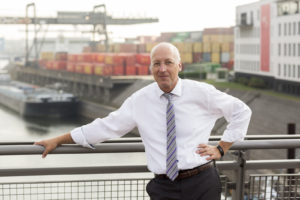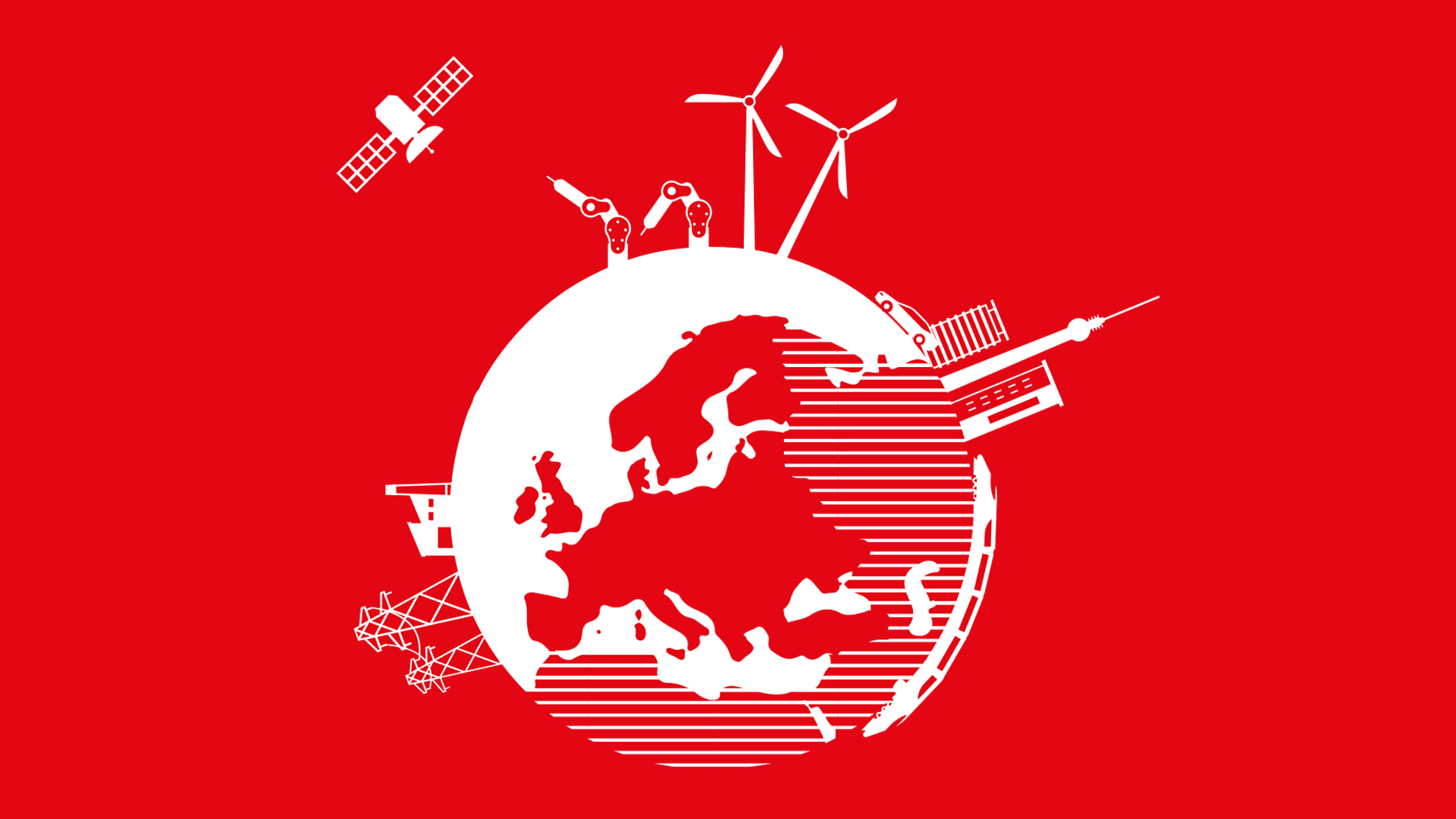Movement
» In der Logistik geht es darum, beweglich zu bleiben – auch und vor allem im eigenen Kopf. «
Jürgen Paland, Division Manager Branch Logistic
Nestled close to the harbour bay, in the large area of the former Krupp-Hüttenwerkes Duisburg-Rheinhausen site, is the port known as ‘logport’. A number of logistics service providers have set up over this 2.65 million m2 space – large enough to fit more than 370 football fields. Mitsubishi Electric chose this location, where the structural changes being undergone in the Ruhr region can be more clearly felt than perhaps anywhere else, for its central European warehouse, which serves as a hub for the distribution of products from all over the world to subsidiaries across Europe.
Heading up these logistics processes is Jürgen Paland, who has been with the company since 1992 and coordinates the various departments and service providers. Together with his team, he ensures that the flow of goods reaches the customer right on time. In this interview, he explains how things run.

‘First, we take orders from our organisation and our European subsidiaries,’ explains the 58-yearold logistics expert. ‘We then pass these on to headquarters in Japan, which sends notification of the orders on our behalf,’ he continues. Of course, this process is carried out using modern IT solutions from the very first entry. An ever increasing number of our customers are already placing orders at their convenience via our online store – at any time from anywhere in the world.
The goods in question can vary greatly, covering everything from a tiny battery to full-size drive trains for rolling stock. Some products, such as large laser processing machines, are so big that they cannot fit in standard 40-foot containers. Even for Jürgen Paland’s highly experienced team, this can pose something of a challenge.
‘Oversized machines are transported on “flat rack containers” on the very top of container ships,’ he explains. ‘The challenge actually lies in handling high-precision equipment with tolerances down to the micrometre range. If they are handled too roughly during loading or unloading, then the accuracy of the equipment may suffer.’
A container from Japan requires some 36 to 38 days to reach Europe before being unloaded in Rotterdam. Here, particularly urgent goods are loaded onto HGVs and transported to Duisburg. The majority of containers, however, make their onward journey by rail, which is eco-friendly and low in CO2 emissions, with two trains a week carrying goods from Rotterdam to Duisburg for Mitsubishi Electric alone. Some containers are also transported by ship as a result of its position on the Rhine, making the last few kilometres of their journey from the port terminal to the central warehouse chauffeured in HGVs. This is how around 350 forty-foot containers arrive at the warehouse, where they are unloaded. This is followed by a visual inspection of the goods, with quantities and item numbers checked at the same time. If everything is as it should be, the goods will be stored and the crate finally has a ‘break’ from its travels.
In spare parts logistics, however, things can still get pretty hectic. In urgent cases, a replacement part may be sent to a customer via courier – even via helicopter if necessary. ‘This does not happen often, though – our products are very reliable,’ beams Jürgen Paland proudly. ‘But when, for example, production comes to a standstill at a large automotive factory in France, the costs can be significant.Flight and couriers become of little consequence: the
main thing is getting the plant up and running again.’ He soon had to leave our conversation to get back to his main task – keeping the flow of goods moving smoothly.
Changes No. 7
Please click on the picture to open the Changes No. 7.
Download
Download the latest Changes as PDF.
Subscribe
Subscribe for the print edition of our customer magazine “Changes”.



